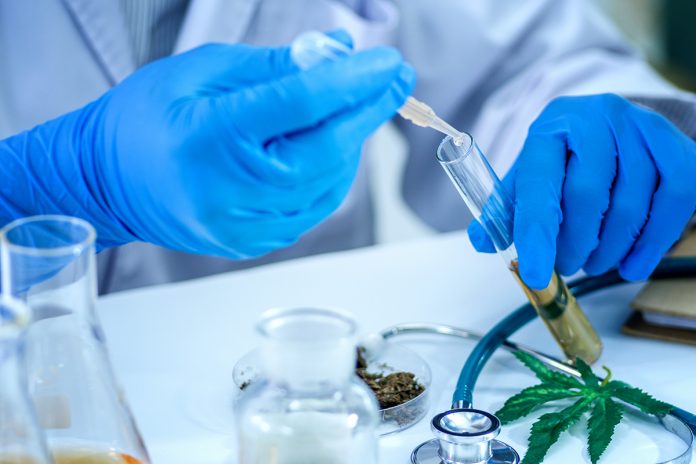Italian researchers announced in late December they have discovered two new phytocannabinoids, the active compounds found in cannabis plants. The compounds have been named Δ9-THCP and CBDP, or Δ9-tetrahydrocannabiphorol and cannabidiphorol, respectively.
The study was published in peer review Nature.
The two most well-known cannabinoids are THC and CBD; tetrahydrocannabinol, which makes the user feel high, and cannabidiol, which has become a huge wellness trend because of its anti-inflammatory benefits.
Though their acronyms sound similar, researchers found one way that Δ9-THCP and CBDP differ from THC and CBD is by the number of atoms attached to the “alkyl side chain” present on cannabinoid molecules. Previously, the number of atoms seen in Δ9-THCP and CBDP had only been produced in synthetic cannabinoids, making this the first time to observe the number produced in nature.
Study data also showed the number of tiny atoms contained in the alkyl side chain makes a big difference—in particular, the more atoms, the more potent the effects.
In fact, using advanced spectroscopic technology, laboratory analysis, and tests with mice, the researchers found Δ9-THCP, or Δ9-tetrahydrocannabiphorol, had an up to thirty times more potent affect on human CB1 and CB2 endocannabinoid receptors, than Δ9-THC—also known as plain, old THC.
“The length of the alkyl side chain has indeed proved to be the key parameter, the pharmacophore, for the biological activity exerted by Δ9-THC on the human cannabinoid receptor CB1 as evidenced by structure-activity relationship (SAR) studies,” researchers cited.
As experts, like in this study, zero in on cannabis compounds and their effects on the endocannabinoid system, they are beginning to discover variations on a molecular level that could produce many as yet unknown affects.
For instance, most laypeople know THC produces a high, but more precisely; it’s the Δ9-THC molecule that creates the effect. The Italian study showed that Δ9-THCP can potentially have even more powerful effects—the longer alkyl side chain seemed to help bind cannabinoids more easily with human endocannabinoid receptors in experiments.
Cannabinoids affect the endocannabinoid system—a physiological system that includes a network of receptors present in human bodies, and in all invertebrates. The receptors bind with cannabinoids, which produces various affects.
The cannabis tested for the study was a medicinal strain called Italian FM2, supplied by the Military Chemical Pharmaceutical Institute in Florence, Italy.
These newest cannabinoids are two of potentially more than two hundred compounds that can be extracted from cannabis. Researchers suggested that more studies should be conducted on medicinal cannabis strains. Genetic engineering, they suggested, could produce plants with high levels of active cannabinoids for pharmalogical use.
Cannabinoids, they said, had the potential to yield many discoveries for biochemists and other researchers, and simple cannabinoids have already proved effective for chronic medical conditions like epilepsy, glaucoma, and cancer.
In previous studies, they said, CBD has been found to have “poor affinity” in binding to CI and C2 endocannabinoid receptors, and so, ongoing research of CBDP will look at the pharmalogical potential for the new cannabinoid’s “anti-inflammatory, anti-oxidant, and anti-epileptic activity.”
As a result of this study and others, the researchers said, finally, “… it would not be surprising to see in the near future cannabis varieties rich in other minor phytocannabinoids. This genetic selection would enable the production of extracts rich in a specific phytocannabinoid with a characteristic pharmacological profile.
“For this reason, it is important to carry out a comprehensive chemical profiling of a medicinal cannabis variety and a thorough investigation of the pharmacological activity of minor and less known phytocannabinoids,” they said.













[…] cannabis that alter each consumer’s experience with a specific strain. These compounds are called cannabinoids and terpenes, and they all interact with each person’s body in a unique […]
[…] cannabis that alter each consumer’s experience with a specific strain. These compounds are called cannabinoids and terpenes, and they all interact with each person’s body in a unique […]